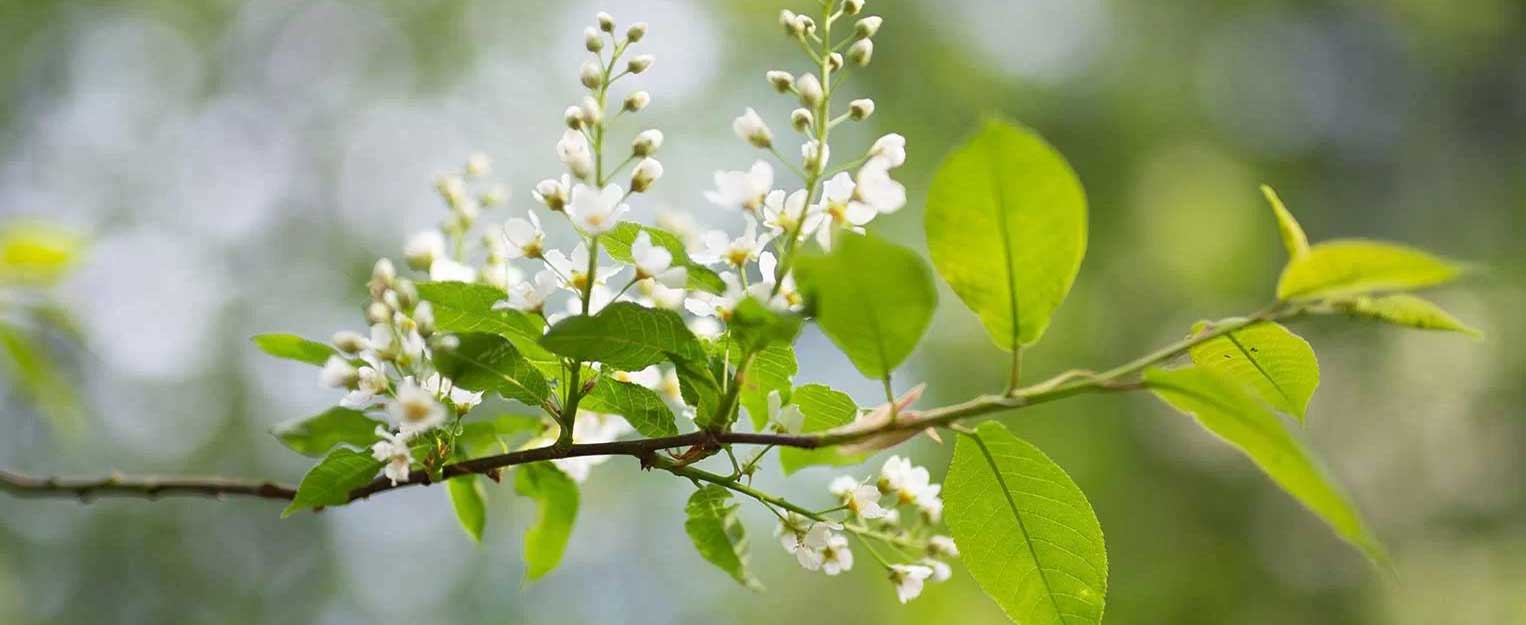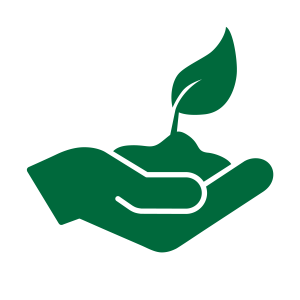Native Garden Plants
Sustainable Landscaping in Bergen County
What are Native Plants and Why Should I Consider Them?
A native plant is one which occurred within this region before colonization by Europeans. These plants, over time, have evolved to grow in a specific region and within specific ecosystems. Native plants have established complex relationships with other native plants, insects and animals, some of which are dependent on one another to thrive.
Native plants, when situated in the proper environment, support their ecosystems more diversely than non-native plantings. While many homeowners have incorporated flowering plants in their landscapes to attract certain birds and butterflies, the habitat needed to support the insect life necessary for their optimal growth is greatly needed. These non-native plants may offer a nectar source for wildlife, but in many cases their leaves, fruits, pollen and nectar are not the preferred food of our vital native insects and wildlife. The lack of proper habitat and food sources for native birds and insects is one factor in the decline of many of these species in the United States.
Another take away of planting non-native plants is the reduction of a natural eco-system. The reliance on the usual non-native landscape plants leads to predictable landscapes regardless of the region. This creates a loss of regional aesthetic identity. Homeowners who desire for pristine landscapes have created residential properties devoid of leaf and plant litter. With proper planning you can maintain a more natural landscape eco-system using native plants, which have an additional benefit of saving money on fertilizers and persticides, and achieving a low maintenance landscape.
Assessing Current Landscape Conditions
When considering the use of native plants in your beds, it is necessary to assess conditions in your landscape, with regards to proper placement within sun and shade, water flow and/or drainage, and soil structure, to give you an idea of the most appropriate native plants for your site.
There are three key elements to take into consideration to attain successful planting that you must consider for each specific bed on your property. These individual assessments are necessary since conditions can vary within your property. Each bed in itself can be an entirely different eco-system depending upon location and characteristics, i.e. sun/shade, soil, etc.
1 – Is the soil mostly sand, silt or clay textured? Wet, or well drained? Is the soil acidic, neutral or alkaline? If you don’t know, contact your county Cooperative Extension office for a soil test for a minimal fee.
2 – What amount of sun light is available throughout the day? Full sun equals 6+ hours of direct sunlight, part sun equals 4 to 6 hours of direct sunlight, part shade equals 2 to 4 hours of direct sunlight and shade equals less than 2 hours of direct sunlight.
3 – How much water is available by natural means? You must be willing to commit to watering any new plants when there’s inadequate rainfall to get them established the first year.
Picking the Right Plants
Know the growth habit of the plants, including their mature size, rate of growth, and ability to spread or stay where planted in the landscape. Strive for a mixture of plants that provide continuous color in the garden, thereby offering more nectar and pollen sources, resulting in a more sustainable landscape.
Now for the fun part | Identifying what native plants you’d like to incorporate into your landscaping.

The tables below identify native plants that tend to be more readily available through local nurseries and plant catalogs. Keep in mind that your native plants, if situated properly, will grow readily so consider buying smaller sized plants. Smaller sized plants also adapt better to their new locations and often catch up in size to larger sized plants within a few years. Plant name links take you to detailed information regarding selected native species.
NATIVE TREES
well drained/moist | Full sun/Pt Shade
50 to 70 ft | smooth, gray bark
American Elm | Ulmus americana ‘Princeton’
Average | Full sun
100 ft | disease resistant
Average | Full sun
30 ft – slow | Evergreen
American Hornbeam | Carpinus caroliniana
Average-moist | Full sun-pt. shade
30 ft., slow | nice globular form
American Linden | Tilia americana
Moist well drained | Full sun/Pt Shade
60 to 80 ft | Drought Tolerant
Bald Cypress | Taxodium distichum
Dry-moist | Full sun
Thrives in wet or dry soils
Black Cherry | Prunus Serotina
Average | Sun-pt. shade
30 to 40 ft.| wildlife value
Black Gum | Nyssa sylvatica
Medium/Wet | Sun/Pt Shade
30 to 50 ft | wildlife value
Average | Sun-pt. shade
30 ft., slow | nice globular form
Average-moist | Full sun-pt. shade
80 ft., moderate | Tolerates pollution
Average | Sun-pt. shade
30 ft. | Magenta flowers – drought resistant
Average | Sun-pt. shade
100 ft. Rapid | Evergreen.
Flowering dogwood | Cornus florida
Average | pt. Sun- shade
30 ft. | Spring Flowering
Average-moist | Full sun-pt. sun
20 – 40 ft. | Great bark texture/color
Paper birch | Betula papyrifera
Acidic/moist | Sun/Pt Shade
50 – 70 ft. | Wildlife Values
Pawpaw | Asimina triloba
Average | Sun-pt. shade
25 ft. | Flavorful, edible fruit
Pin Oak | Quercus palustris
Acid, avg-moist | Full sun-pt. sun
70–90 ft., rapid | wildlife value
Quaking Aspen | Populus tremuloides
acidic-moist | Sun/Pt shade
40–50 ft. | Wildlife Value/Host Plant
Red Maple | Acer rubrum
Dry-moist | Sun-pt. shade
40–60 ft., rapid | Red fall foliage
Red Spruce | Picea rubens
acidic, well-drained | Sun/Pt Shade
60–70 ft. | Wildlife Value
Sugar Maple | Acer saccharum
Average-moist | Sun-pt. shade
60–70 ft., slow | bright fall foliage
Tuliptree | liriodendron tulipifera
acidic-well-drained | Full Sun
70–90 ft. rapid | wildlife value
White Ash | Fraxinus americana
acidic-well-drained | Full Sun
40–50 ft. rapid | wildlife value
NATIVE SHRUBS
Moist, well-drained soil | Sun/Pt Shade
3 to 5 ft | Beneficial to Wildlife
Dry – Sandy | Full Sun
6 to 8 ft | Beneficial Wildlife
Bearberry | Arctostaphylos uva-ursi
Dry – Average | Sun/Shade
6 to 12 ft | Evergreen – Berries
Soil Tolerant | Sun/Pt Shade
3 to 8 ft | Beneficial for wildlife
Acidic Moist | Full Sun/Pt Shade
8 to 10 ft | Drought Tolerant
medium to wet, well-drained | Full sun-pt. shade
5 to 12 ft | Pollinator/Host Plant
Acid Moist | Full sun-pt. shade
6-12 ft | Excellent Fall Color
Hollyleaved Barberry | Mahonia aquifolium
Average | Full sun-pt. shade
8 ft., moderate | drought tolerant
Acid-moist | Full sun/Pt Shade
Evergreen | Wildlife/Berries
Meadowsweet | Spiraea alba Du Roi
Moist, Wet | Sun/Pt Shade
5 to 7 ft | Beneficial to wildlife
Mountain Laurel | Kalmia latifolia
Acid, avg-moist | Part Sun-Shade
7–15 ft., slow | Evergreen – Spring Flowers
Ninebark | Physocarpus opulifolius
Moist, well-drained soil | Full sun/Pt Shade
6 to 10 ft | Beneficial Wildlife
Northern Bayberry | Morella pensylvanica
Dry-Moist | Full sun-Pt Shade
5–8 ft., rapid | Thrives in all soil types
Northern Spicebush | Lindera benzoin
Average/Moist | Full Sun – Pt Shade
12 ft. slow | Yellow Fall Foliage
Pasture rose | Rosa carolina
Dry – Average | Sun – Shade
Fragrant 2″ wide pink flowers
Dry/Moist | Pt Sun – Pt Shade
6 to 10 ft. | Fall Foliage/Wildlife/Berries
Redstem Dogwood | Cornus sericea
Average/Moist | Full Sun
12 ft./Moderate | Bright Red Stems
Serviceberry | Amelanchier alnifolia
Average/Moist | Sun/ Pt Shade
8–12 ft./Moderate | Edible Fruit
Acid/Average | Sun/Pt Shade
3–8 ft./Slow | Flowers/Wildlife/Berries
Summersweet | Clethra alnifolia
Acid/Moist | Full Sun/Pt Shade
5 to 8 ft | Late Summer Flowers
Virginia Rose | Rosa virginiana
Average/Moist | Shade/Pt Shade
2 to 4 ft | Pollinator/Host Plant
Average/Moist | Full Sun/Pt Shade
3 to 6 ft | Long lasting fall color
Acid/Average Moist | Full Sun/Pt Sun
6 to 10 ft/Moderate | Evergreen
NATIVE PERENNIALS
Acidic/Well Drained | Pt Shade
6 inches | Excellent Woodland Groundcover
Average | Full Sun
1 to 2 ft | Pollinator Plant
Dry/Average | Pt Sun/Pt Shade
2 ft | Host Plant/Pollinator
Boneset | Eupatorium perfoliatum
Average/Moist | Full Sun/Shade
3 – 6 ft | Long Bloom Time/Pollinator
Butterfly Weed | Asclepias tuberosa
Dry/Average | Full sun
2 ft. | host plant monarch caterpillars.
Average/Moist | Pt Sun/Pt Shade
3 ft | Attracts Hummingbirds
Christmas Fern | Polystichum acrostichoides
Dry/Average | Part Sun-Shade
2 to 3 ft | Excellent Shade Accent Plant
Rich Moist | Shade
8 to 16 inches | Pollinator
Dense Blazing Star | Liatris spicata
Average | Full sun-Pt Sun
1 to 3 ft | Purple Spike Flowers
Average | Pt Shade
4 to 8 inches | Pollinator
Moist | Sun – Pt Shade
3 to 4 ft | Attracts butterflies/birds
Eastern teaberry | Gaultheria procumbens
Acid/Average | Pt Sun – Shade
3 to 6 inches | Fragrant Evergreen
False Sunflower | Heliopsis helianthoides
Dry/Moist | Full Sun
3 to 5 ft | Long Blooming
Average/Moist | Pt Shade/Shade
18 inches | Bronze Red Foliage/Pollinator
Golden tickseed | Coreposis tinctoria
Average/Moist | Sun/ Pt Sun
1 to 3 ft | Pollinator/Deer Resistant
Moist/Wet | Full Sun/Pt Shade
3 ft | Attracts Butterflies
Dry/Moist | Full Sun/Pt Shade
3 ft | Pollinator/Attracts Song Birds
Purple Coneflower | Echinacea purpurea
Average | Full Sun
2 ft | Attracts Goldfinches
Average Moist | Pt Shade
6 to 8 inches | Pollinator
Trumpet Honeysuckle | Lonicera sempervirens
Average/Moist | Full Sun/ Pt Sun
10 to 20 ft | Climbing Vine
Average | Full Sun
3 to 4 ft | Pollinator/Deer Resistant
Average | Full Sun/ Pt Shade
2 ft Mounded | Attracts Wildlife/Fragrant
Acidic/Sandy | Full Sun/ Pt Shade
1 ft Mat Forming | Disease/Pest Free
We hope you find this information about native plants in Bergen County useful. As you can see above; many of our native perennials are either host or pollinator plants for beneficial insects, butterflies, bees, moths, songbirds and hummingbirds. Lincoln Landscaping endeavors to promote sustainable and organic lawn and property management techniques and practices. We hope that this page inspires, educates, and possibly guides you towards a new beginning, perhaps an “organic” way of life.
If you are contemplating incorporating a pollinator garden bed into your landscape we have an excellent starting guide on our website. Or you can contact us….
At Lincoln Landscaping cultivating the environment is our life and livelihood. It is our number one goal to help our clients create and maintain beautiful landscapes while reducing the impact on the environment. Whether you are interested in a pollinator landscape garden design and build or other landscaping or property management project; we can create for you an environmentally friendly, organic and beautiful property. We create eco-systems.
Yua Tah Hey
(A traditional greeting in Navajo, often spelled yá át tééh, which translates generally as “it is good.”)


